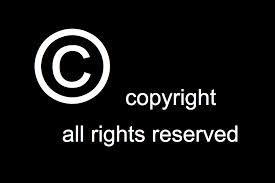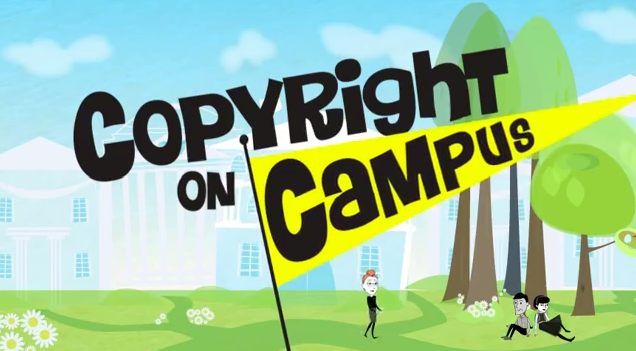In this module, we developed materials to communicate digital literacy and citizenship through compliance with the Copyright Act of 1976 and Fair Use Guidelines. Instead of reinventing the wheel, I chose to stand on the shoulders of giants to create a web page with resources that can be shared with teachers.

Materials on This Page
- Video: Copyright on Campus
- Video: Creative Commons Remix
- Text-Based Overview of Copyright, Fair Use, and Creative Commons
- Handout: Copyright Quick Reference
- Open Educational Resources (OER) and OER Commons
Copyright and Fair Use Resources to Reuse and Remix
The information below can be shared with instructional and support staff.
All content is licensed under a Creative Commons license.

This work is licensed under a Creative Commons Attribution-NonCommercial-ShareAlike 4.0 International License.
Video Overviews: Copyright and Creative Commons Licenses
Downloadable Quick Reference Sheet by Technology and Learning
Copyright
Copyright law, established in 1976, is a legal protection granted to original works, published or unpublished. A copyright covers literary, dramatic, musical, artistic, and certain other intellectual works. Schools and individuals can be found guilty of copyright violation if they do not honor the law and ignorance of the law does protect the violator from consequences if found guilty.
These exclusive rights are subject to a time limit, and generally expire 70 years after the author's death. In the United States, any music composed before January 1st, 1923, is generally considered public domain. ("Copyright Law of the United States." Wikipedia. Wikimedia Foundation, n.d. Web. 15 Oct. 2016)
Fair Use
Fair use is a clause in the copyright law that allows us to use copyrighted materials under certain guidelines. Teachers might be under the false impression that anything can be used for educational purposes. This is absolutely not correct! Educational use is guided by the law.
How do I know if I have crossed the Fair Use line and committed copyright infringement?
First, download and review this Fair Use quick reference sheet
Next, ask yourself four questions relating to fair use factors:
-
What is the character of the use?
Have you transformed the original, adding new meaning, or created a parody based on the original? -
What is the nature of the work to be used?
Factual works have more flexibility for classroom use than fictional works . -
How much of the work will you use?
See guidelines in the quick reference sheet - Each medium has it its own guidelines for use. -
What effect would this use have on the market for the original or for permissions if the use were widespread?
Will your use of original materials cause the creator to lose revenue?
Sharing with Creative Commons
Creative Commons is an organization that allows creators to publish their work using a variety of licenses. The licenses cover a range of reuse scenarios and is a way for us to share more freely while retaining credit for our original work. Anyone could, and should, create a license for their work and creative commons has a tool on their site to make this quick and easy for us. Learn more and create your CC license here.
Open Educational Resources (OER)
Instructional Resources for the21st Century
There is no one, standard definition of open educational resources. However, the following broad definition of OERs from OER Commons seems to be generally accepted by the community:
'Open educational resources are teaching and learning materials that are freely available online for everyone to use, whether you are an instructor, student or self-learner. Examples of OER include: full courses, course modules, syllabi, lectures, homework assignments, quizzes, lab and classroom activities, pedagogical materials, games, simulations, and many more resources contained in digital media collections from around the world.'
Open Educational Resources Commons (OER Commons) is a great place to start your search for high quality resources that are copyright free. The site also offers free, interactive authoring tools, and lesson/module builders.
From a single point of access in OER Commons, you can search, browse, and evaluate resources in OER Commons' growing collection of over 50,000 high-quality OER. Here are some curated collections to start exploring:
Digital Literacy and Citizenship: Module Reflection
The International Society for Technology in Education (ISTE)
Standards for Coaches
Standard 5: Technology coaches model and promote digital citizenship.
a. Model and promote strategies for achieving equitable access to digital tools and resources and technology-related best practices for all students and teachers.
When we think about equitable access, there is more to consider than access to a device or the internet. Access includes materials that are designed in a way that attends to inclusion of special needs populations. For example, design for visually impaired individuals requires thoughtful consideration. To meet the needs of visually impaired users, I've learned to use white space as a design element, not to crowd pages, and to use capital letters and color to draw attention to content. When using color, I am cognizant that color blindness is more prevalent that I once assumed and that blue and green can look the same to some users.
b. Model and facilitate safe, healthy, legal, and ethical uses of digital information and technologies
When we talk through what we are thinking when we model the use of software/apps, our thinking becomes tangible to students. They hear verbalization of our though processes and begin to understand how we have internalized the need to respect intellectual property and adhere to copyright/fair use. It's also quite powerful to model ways to mitigate health issues associated with extended periods of sitting in front of a computer. We can take stretch breaks in class, stop to look out the window to refresh our eyes, and wiggle our fingers several times during class.
c. Model and promote diversity, cultural understanding, and global awareness by using digital age communication and collaboration tools to interact locally and globally with students, peers, parents, and the larger community
It seems like I spend more and more of my time communicating online with individuals across the globe as well as in my community. To be the most effective communicator possible, I must always tailor the communication mode and style to the audience with whom I'm addressing. The type of media I select will match the audience as well. When addressing students, I'll be more "flashy" and try to up the wow factor. When addressing adults, I'll craft polished messages using a more business-like tone. With all audiences, I'll be cognizant to use layman's terms for educational jargon so that my messages are clearly understood.
